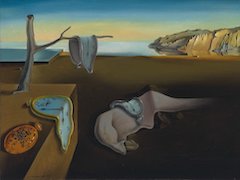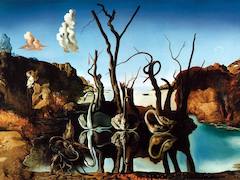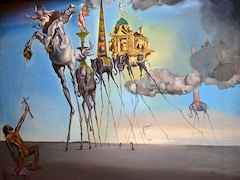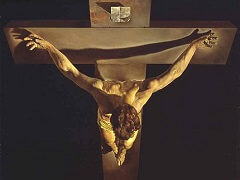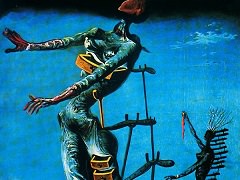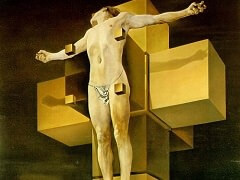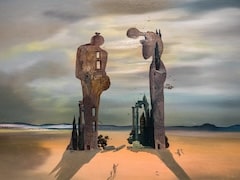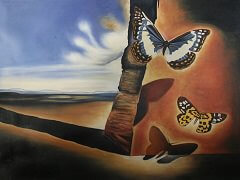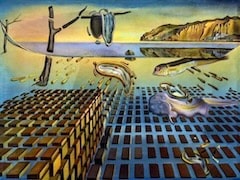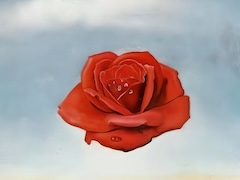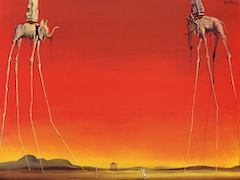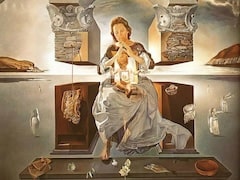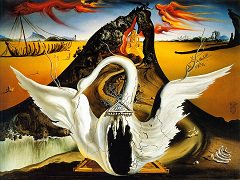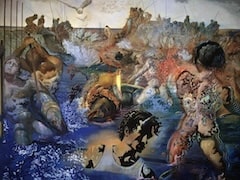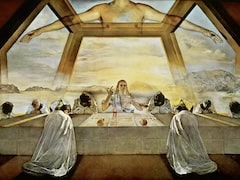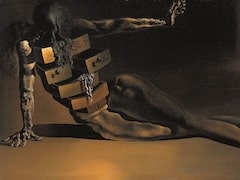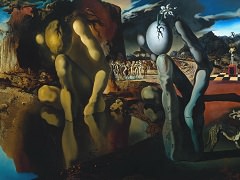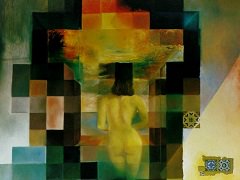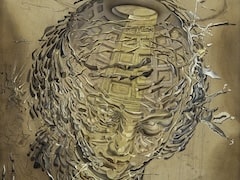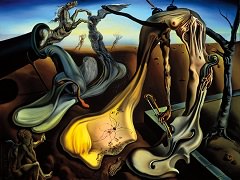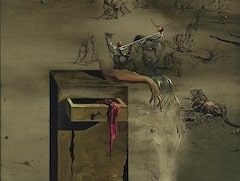Cubist Self-Portrait, 1923 by Salvador Dali
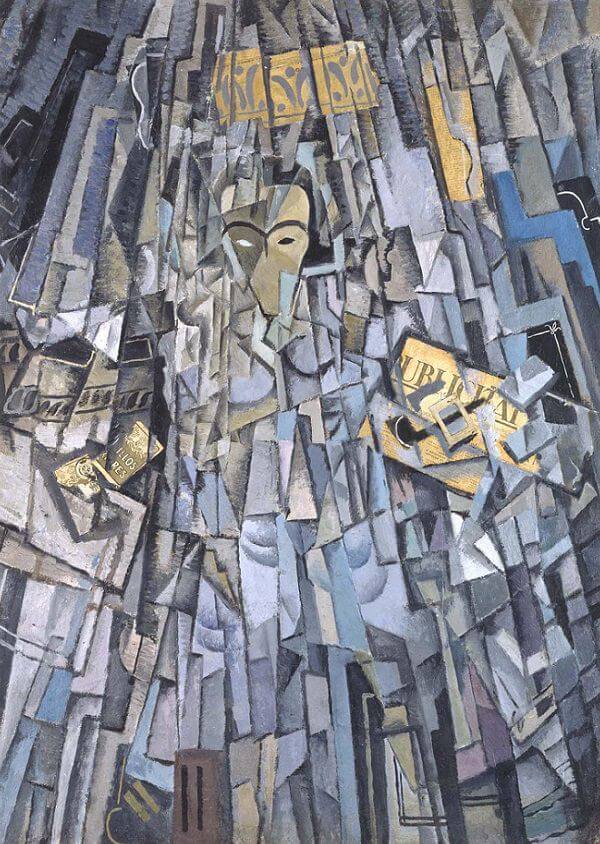
Between 1922 and 1923, and up until around 1928, Salvador Dali's career went through what is called his Cubist phase, in which, on a number of occasions, the movement's influence was interwoven with the evocation of motifs from Metaphysical painting.
Cubism, which challenged the way artists thought about how a painting could deal with space, dimension, and form, was the most exciting movement of the 20th century, and artists from around the world were drawn to experiment with its techniques. Dali too tried his hand at the style, though he was at heart a brilliant naturalistic painter whose surreal concepts were given greater impact by the realism of his images. As a nineteen-year-old, Dali was wowed by the Cubism works of Picasso and Braque.
In Cubist Self-Portrait, 1923, Dali places his head in the center of the composition, easily recognizable among the mass of cross-hatching abstract lines that make up the rest of his body.

